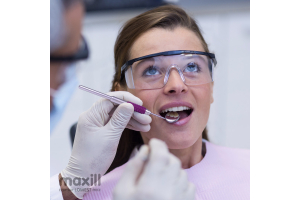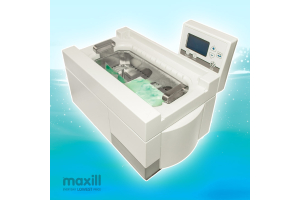Ministry of Labour Pandemic Planning & Compliance Inspections Happening NOW: Is YOUR Office Ready?

 Dental offices are no strangers to the potential of having an unannounced IPAC Public Health inspection. Now dental offices can add the possibility of the Ministry of Labour randomly arriving at the dental practice to inspect the office's pandemic plan and compliance.
Dental offices are no strangers to the potential of having an unannounced IPAC Public Health inspection. Now dental offices can add the possibility of the Ministry of Labour randomly arriving at the dental practice to inspect the office's pandemic plan and compliance.
The difference between the two inspections is that Public Health is mandated to protect the public and the Ministry of Labour for employee/worker safety. Every workplace must be free of hazards to the employee, including infection control, with the SARS-COV-2 being an infectious hazard. The missions of both authorities do overlap in the end with the result being overall human safety. The Ministry of Labour states their objective is to enhance employers' awareness of their responsibilities.
The Ministry of Labour is very transparent with disclosure of inspection ‘blitzes’ and what sectors of the workforce will be the focus. There are 4 workplace environments under observation: construction, health care, industrial, and mining. You may see this for yourself by following this link.
When Did the Ministry of Labour’s Inspections Begin?
They began a few months ago with the ministry hiring a substantial amount of field agents and are currently ongoing at this present time. The audits come without warning and begin the moment the agents step foot into the office. As per the ministry, the rationale for these specific blitzes is to address the following:
- Gaps in communication and provision of information pose strong health and safety risks during the transition of care between facilities.
- The transfer of information to prevent workplace injuries from hazards related to workplace violence, (and others such as musculoskeletal and infections) is important for workplace parties so they can put in place the appropriate measures and procedures to protect workers.
- Bring the focus on worker health and safety to the forefront of the changing and integrated healthcare system.
The dental regulatory bodies, dental professional organizations, public health Ontario, and the government of Canada, have all offered countless resources to ensure businesses have a pandemic plan and are following through with compliance. The Ministry of Labour has also offered tools and knowledge to comply with health and safety requirements, which is PHASE 1 where the ministry focuses on education, outreach, and awareness.
PHASE 2 are the field visits to evaluate if employers are complying with the Occupational Health and Safety Act (OHSA) and its regulations, and to raise awareness pertaining to specific issues the field agent may witness in the workplace.
It is an understatement to say dental offices have been busy. In being very occupied with the additional precaution practice enhancements and data changing day today, it would be easy to see how something may have been overlooked, certainly not on purpose. In the last months, research upon research has unfolded in dental practice to ensure compliance and the message from the catchphrase “once you know better, do better” has been received loud and clear. We certainly now know how to manage dental care through a pandemic. For those, who know better and did not do better, well that’s an entirely different article tapping into the topic of ethics and clearly why the Ministry of Labour is hitting the pavement in full swing. Non-compliance has consequences, hence, the importance of performing a self-assessment of your own practice to ensure nothing has been missed.
What Does Inspection Include?
Just as an IPAC Public Health audit, the investigation includes a list of criteria the office MUST meet. The inspection is called a “Proactive Workplace Inspection Pandemic Plan Review”.
The categories for review are as follows:
- Inspectors General Observations
- Joint Health and Safety Committee/Health and Safety Rep and IPAC Rep Involvement
- Team Training of Pandemic Plan (with proof of training log)
- Physical Distancing Measures in Place
- Reasonable Precautions when Physical Distancing is not achievable
- Screening Measures
- Screening for clients
- Screening for visitors coming to office
- Screening for staff including clear polices for what to do if an employee develops COVID 19 symptoms
- Contact Tracing Plan
- Cleaning, Disinfecting & Sterilizing Procedural Steps
- Hand Hygiene Program
- Personal Protective Equipment (of ALL PPE for: procurement, inventory, availability at point of use and training including respirator mask fit testing cards for each team member)
- Posting of Resources that may assist workers and employers
- Emergency Leave under Employment Standards Act
- Workplace Mental Health
- Ontario Ministry of Health Emergency Planning and Preparedness
- Public Health Ontario review
- Mask Use for Non-Healthcare Workers (Public Health Ontario)
- Health and Safety System Partners
- MLTSD Guidance on Masking
- MLTSD Restaurant Food Service Guidance
- Additional Guidance
- Resources to prevent COVID-19 in the workplace
- You may also contact Telehealth Ontario at 1-866-797-0000
The inspection concludes with a field visit report that is promptly delivered to the office manager. The report includes a comment section to indicate a pass or fail.
If it is a pass, the statement is typically “no further action is required by the Ministry of Labour, Training and Skills Development at this time”. This may be paired with a few resources to add to the availability and accessibility of employee information.
These resources would then be posted for each employee to access, read and sign off if they have been understood (a task in the domain of the H & S and IPAC Rep’s roles). In the opposite scenario, failing the review, certain tasks must be completed within a specific timeline with each task being assessed in the risk level it imposes on the worker.
No different than a public health IPAC audit, the higher the risks involved the greater the consequence and the quicker the need to correct the issue. In the event of a failure, the dental office is subject to the legislation under the OHSA for compliance outcomes.
How can maxill help? In the arena of standards compliance, maxill is always one step ahead and initiated a service called IPAC in a Box offering a comprehensive assessment of your practice to ensure it meets both public and worker safety. IPAC in a box offers the following:
A maxill University account will be set-up for you and you will be assigned 2 maxill training units. Additional units can be purchased if you choose to train a larger group. The CE accredited video will shed light on some of the most common areas of non-compliance in the reception area, the sterile bay and the operatory.
A summarized checklist will be emailed to you with your maxill University login information so you can get started with a primary review of some of your processes and procedures. We recommend the video course and summarized checklist be completed before your on-site visit with your maxill IPAC Field rep.
A 2-hour on-site review will be scheduled with an IPAC Field Representative. The IPAC Field Rep will walk you through a comprehensive self-evaluation tool to help you identify any areas of concern within your office.
The comprehensive self-evaluation tool is a 48-page detailed document designed to thoroughly guide you through a mock audit of your office. Once completed you will be awarded a certificate indicating you have completed an on-site review of IPAC policies and procedures in preparation for an audit.
A $500 product credit will be added to your maxill account to purchase IPAC related products that will help you maintain compliance or correct any areas of concern. Your IPAC Rep can help you identify the appropriate products during your on-site review.
Your IPAC Field Rep will also conduct a hand hygiene training session (an often overlooked IPAC requirement). The maxill Reveal Cross Contamination Tracking Kit uses glow-in-the-dark cream and a blue light. It provides visual feedback on skin and clothing contamination during removal of PPE and hand hygiene. The kit includes a log page, MIFU, Reveal cream and a blue light, all packaged in a convenient hardshell case.





